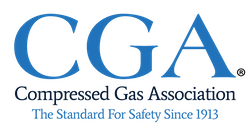Navigating Model Code Consolidation: CGA’s Contribution to NFPA Hydrogen Codes
Model codes are requirements developed by standards organizations, such as the National Fire Protection Association (NFPA), to help enforcement officials operate safely and efficiently. They are not regulatory in nature but are often adopted by states, cities, and other municipalities either as written, or with modifications, which saves the trouble of developing individual codes and ensures codes are as uniform as possible.
Given the relevance and importance to our members, CGA takes an active role in the process to update model codes, including codes for the rapidly growing hydrogen space. In particular, CGA recently helped to revise the scopes and organization of two model codes of significant importance to CGA:
- NFPA 2, Hydrogen Technologies Code
- NFPA 55, Compressed Gases and Cryogenic Fluids Code
CGA has played a pivotal role in refining safety standards for compressed gases and cryogenic fluids within NFPA codes, particularly focusing on hydrogen-related provisions. Over the years, we’ve advocated for consolidating these requirements into NFPA 55, which has evolved to cover a wider range of gases, including hydrogen. Similarly, when NFPA 2 was introduced in 2011 to address specific gaps related to hydrogen use, such as fueling for electric vehicles, it incorporated relevant provisions from NFPA 55 concerning hydrogen storage. This approach aimed to simplify user experience, but challenges emerged due to inconsistencies or omissions in the copied material, requiring users to refer to both NFPA 2 and NFPA 55 for complete compliance.
To address these challenges, a significant change was implemented in the 2023 edition of NFPA 2. The extracted hydrogen storage requirements from NFPA 55 were removed and fully integrated into NFPA 2. This adjustment transferred ownership and oversight of these requirements solely to the NFPA 2 technical committee, streamlining the user experience by consolidating all necessary hydrogen-related guidelines within a single standard. Consequently, NFPA 55 is no longer linked with NFPA 2, allowing the NFPA 2 technical committee to autonomously manage the content.
These revisions represent a strategic effort to enhance clarity and usability within safety codes governing hydrogen applications, ensuring that stakeholders can access comprehensive guidelines efficiently and with greater certainty.
CGA and our members are actively engaged in these decisions. CGA Technical Manager Rob Early chaired the task group that merged these parts of these two existing codes. The task group had a challenging goal but was able to move all hydrogen content out of NFPA 55 and into NFPA 2 without losing any material, ending up with codes that are cleaner and easier to follow.
If you wish to learn more about CGA’s model code work or have any questions about the NFPA codes, please contact Rob Early, rearly@cganet.com.


